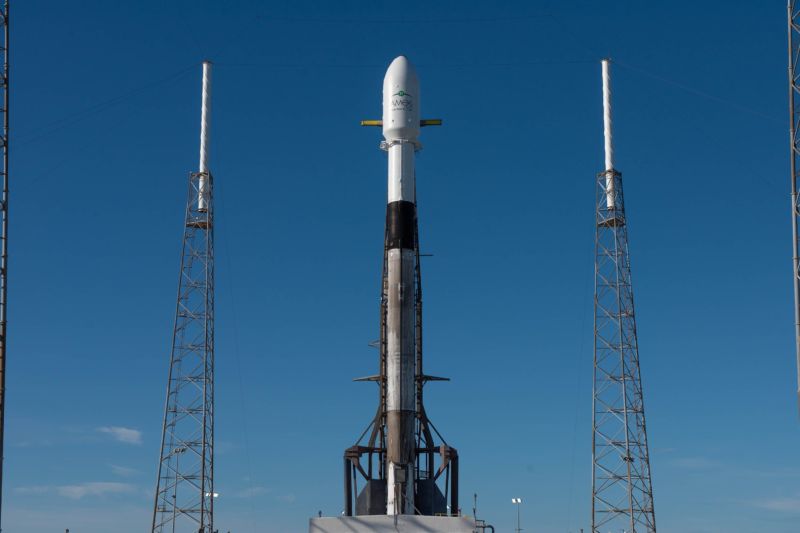
8:30pm ET Update: After a short weather delay, a Falcon 9 rocket launched on Tuesday evening from Florida and successfully delivered a large, 6.5-ton communications satellite to geostationary transfer orbit. Although the first stage was not recovered due to mission requirements, SpaceX founder Elon Musk said at least one of the fairing was successfully caught by a recovery ship.
The short, embedded video is worth watching.
Original post: Less than two and a half years have passed since SpaceX first reused one of the first stages of its Falcon 9 rocket. But in the 28 months since the historic launch of the SES-10 communications satellite on a previously flown booster, SpaceX has made re-use routine. The company has now launched previously flown Falcon 9 first stages more than two dozen times.
As the novelty of vertically launching a rocket, vertically landing it, and then launching it again has worn off, there has been a pretty remarkable sea change in attitudes toward this technology. Whereas prior to the March 30, 2017 launch of the SES-10 satellite skeptics abounded, there are increasing numbers of converts to be found around the world.
Russian space officials have gone from dismissing the economics of reusable launch to creating a new design bureau with the express purpose of studying and developing reusable launch vehicles. For a long time, European rocket scientists, too, scoffed at the utility of reuse. Now they are also studying how to develop a Falcon 9-like rocket. Japan’s next rocket after its new H3 booster will likely be reusable, and a raft of Chinese firms are also studying—or perhaps simply copying—the SpaceX model.
It’s therefore somewhat surprising to see a SpaceX launch that does not culminate in a rocket landing. But that’s what will happen Tuesday during an 87-minute launch window that opens at 8:21pm ET (00:21 UTC Wednesday), when SpaceX will attempt to launch the Amos-17 satellite to geostationary transfer orbit for Spacecom, an Israeli communications company. SpaceX is providing the launch for free after a static fire test failure of the Falcon 9 in September, 2016, which destroyed the Amos-6 satellite.
This first stage has previously flown twice, for the Telstar-19 VANTAGE mission in July, 2018 and the Es’hail-2 mission in November, 2018. Because of the high energy requirements for this mission—the satellite weighs 6.5 tons—SpaceX will not attempt a recovery of the first stage. After the launch, SpaceX will attempt to recover one or both of the payload fairing halves with its recovery ships Ms. Tree and GO Navigator.
The webcast for Tuesday evening’s mission from Space Launch Complex 40 at Cape Canaveral Air Force Station, Florida, should begin about 15 minutes before the launch window opens. Weather conditions, with the potential for showers or thunderstorms, are not optimal. But given the long-ish launch window, the company has a decent shot at launching Tuesday.























